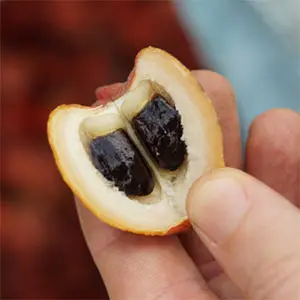

Modulating the taste of high intensity sweeteners

When it comes to sugar alternatives, no high intensity sweetener (HIS) tastes quite like sugar.
So while sugar reduction remains important for consumers, rebuilding the right sweet taste experience is the only way to keep them coming back.
Sweetener innovations
Strong demand for zero sugar products is driving innovations in alternative sweeteners, from traditional artificial high intensity sweeteners like aspartame to new natural sweeteners like stevia and monk fruit.
There is a recent renewed interest in sweet proteins like brazzein, and other natural proteins that augment the perception of sweetness. Over the years, new sweeteners have seen their sensory properties improve, but they still cannot replicate the flavour profile of real sugar.
While consumers continue to seek out zero sugar products, sugar substitutes still can’t be used one-to-one to replace sugar without compromising on taste.
Types of sugar alternatives
Sugar alternatives can be grouped into three different categories, each of which comes with its own characteristics and challenges.
Artificial | Saccharin |
|
Nutritive natural | Sugar alcohols |
|
Non-nutritive natural | Steviol glycosides |
|
Modulating high intensity sweeteners
All high intensity sweeteners have specific characteristics such as a delayed onset, a sweetness lingering, or a licorice aftertaste.
Givaudan’s application teams employ a three-pronged approach to modulate the flavour properties of high intensity sweeteners:
- Correction of delayed sweetness onset, making it more upfront.
- Masking of bitter, metallic, licorice off-notes that become dominant over time
- Reduction of lingering sweetness

Complete flavour design
In addition to modulating the profiles of high intensity sweeteners, we can also help customers achieve delicious and exciting new alternatives. Using only natural flavour, these reformulated products are often preferred by consumers over the full sugar version.
Complete flavour design is often used in conjunction with a technique known as holistic profiling. Holistic profiling focuses on the overall satisfaction of a product, as measured by the Overall Holistic Rating (OHR) and provides great insights into how consumers will react to the new product.
Complete flavour design is not about replacing the sugar experience, but creating a new formulation that is equally or better liked than the full sugar version. It results in products that may taste different, but have the same or higher OHR from consumers.
Using this method, we’ve been able to reduce sugar by 50% in an orange carbonated drink using only natural flavours.
High intensity sweeteners with a clean label
There are only a few sources of natural high intensity sweeteners available for those looking for label-friendly ingredient lists. In addition to providing a wide palette of natural solutions for balancing sugar-reduced products, Givaudan also offers thaumatin, the only known, commercially available, natural sweet protein.

Made from the Katemfe fruit (Thaumatococcus daniellii), which grows in the outskirts of the rainforests in Western and Central Africa, Givaudan extracts thaumatin using a proprietary process to make Talin®, a purified grade flavour modifier.
Talin® is typically used at low levels in food and beverages, in combination with natural sweeteners like stevia, to help round up the profile and reduce undesirable off-notes and off-tastes.




